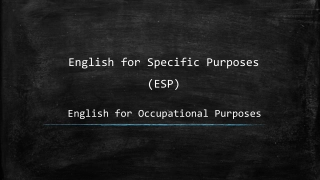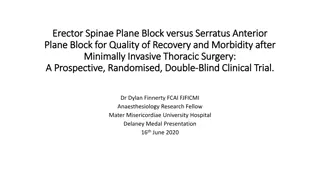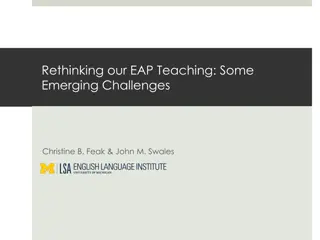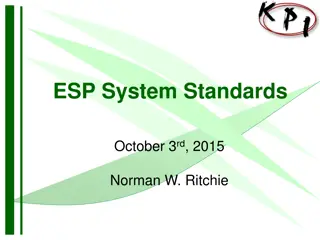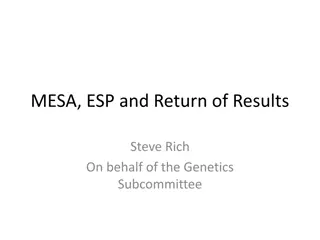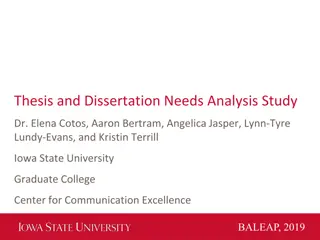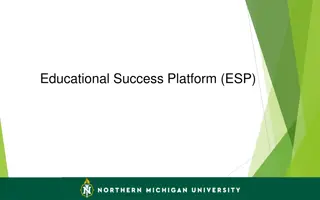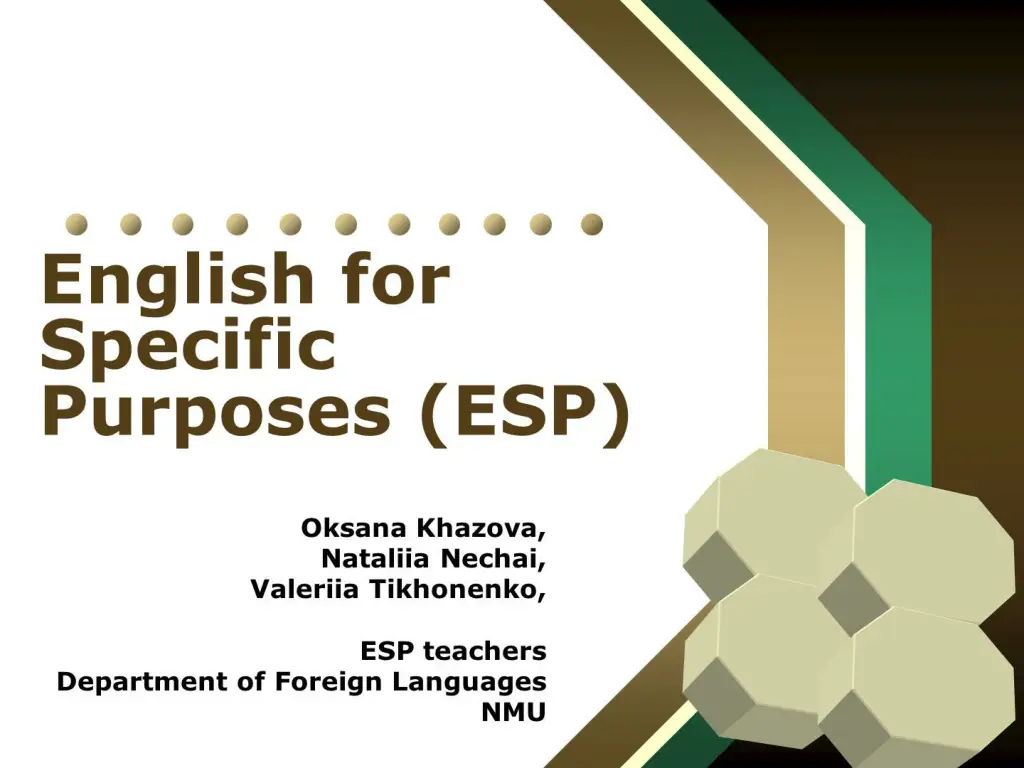
Effective ESP Approaches for English Language Learners
Discover innovative ESP approaches for English language learners at work, focusing on needs analysis, professional skills, and practical assessments. Explore advantages and disadvantages of tailored English language training for specific purposes.
Download Presentation

Please find below an Image/Link to download the presentation.
The content on the website is provided AS IS for your information and personal use only. It may not be sold, licensed, or shared on other websites without obtaining consent from the author. If you encounter any issues during the download, it is possible that the publisher has removed the file from their server.
You are allowed to download the files provided on this website for personal or commercial use, subject to the condition that they are used lawfully. All files are the property of their respective owners.
The content on the website is provided AS IS for your information and personal use only. It may not be sold, licensed, or shared on other websites without obtaining consent from the author.
E N D
Presentation Transcript
Add Your Company Slogan English for Specific Purposes (ESP) Oksana Khazova, Nataliia Nechai, Valeriia Tikhonenko, ESP teachers Department of Foreign Languages NMU
Outline Approaches to ESP Needs analysis and professional profile Addressing learners' needs
ESP approaches English for English through Objective to enable learners to function effectively at work Objective to raise the learner s level Starting basic point - Grammar and topic syllabus with other elements added Starting basic point - Needs analysis (grammar supports the communicative aim) Reading and listening - to challenge the learners Sources: newspaper articles, interviews Reading and listening - to teach the skills Ss need to read and listen at work Sources: authentic documents, situational dialogues Speaking lessons contain a lot of discussions and presentations Speaking is focused on simulations and role plays Writing comprises articles, essays, etc. Writing includes authentic tasks such as emails and reports
Approaches to ESP An English for approach aims to teach the professional skills and language that the learners need in order to function effectively in English at work. An English through approach aims to teach a traditional English syllabus, including grammar, vocabulary and work in the four skills, in the context of the learners ESP field
ESP Assessment English for English through DIFFICULT EASY Focus on role plays of authentic situations and real-life writing task. Focus on tests of grammar and vocabulary supplemented with tests of reading, writing, speaking and listening. Success is measured in terms of effective communication rather than absolute English level.
Advantages English for Practical based on needs English through Systematic learners have the sense of achievement (as they move through the levels) Avoids wasting time on something the learners can learn somewhere Fairly easy to create a syllabus Enables learners to function effectively at work Language and skills may be used in other context Language and skills may be used in other context
Disadvantages English for Possibly a sense of drift not reaching a higher general English level English through May spend too much time on irrelevant things (like types of clouds or obscure grammar structures) Difficult to create lessons and assess progress May miss important focus on field-specific language Possibly too focused, especially if the learner doesn t end up doing the job he\she is training for Not very practical for real tasks
Types of needs personal learning professional Previous learning experience Education Job Stakeholders Professional profile Personality Aptitude Motivation Age Cultural background Wants Available time
What specialist lexis will my learners need to be able to use? What genres will they need to be familiar with? In which situation and contexts will they be using English? Which of these situations are most important for the organization? Where will misunderstanding cause problems for the organization?
Types of needs analysis Workplace observation Interview Questionnaire Checklist (yes/no questionnaire) Placement test Analysis of authentic texts
A professional profile is a description of a typical person in a given ESP field and that person does on a daily basis in his/her professional life. The purpose is to build the teacher s understanding of the nature of the learners work. A needs analysis is a tool for identifying what a specific learner needs, wants and expects from a language course to function mode effectively in his/her professional life. The purpose is to prioritise the key things to include in the course.
Sources of professional information asking an expert (e.g. a university professor) speaking to professionals (apart from your learners) workplace tours (i.e. someone shows you around their workplace and explains what is happening) TV programmes and online films (e.g. YouTube or a series A Day in the Life of ) the Internet magazines textbooks support groups (e.g. online communities of English teachers in a similar situation to you)
Students feedback I remember vocabulary for a test, but then I forget everything
Were a part of a global process 55 countries* 60% post-grad courses in English 4.5 million students study outside their home country 7 million by 2020** *Dearden, J. (2014) English as medium of instruction a growing global phenomenon (Interim Report). The British Council. http://www.britishcouncil.org/sites/britishcouncil.uk2/files/english_as_a_medium_of_instructio n.pdf **Altbach, P. G., Reisberg, L., & Rumbley, L. (2009) Trends in Global Higher Education: Tracking an Academic Revolution (A Report Prepared for the UNESCO 2009 World Conference on Higher Education)
Addressing students needs ability to get information from L2 sources interact effectively in academic and professional environment express themselves in L2
Addressing students needs Employers EMI ESP+EAP teachers Students teachers University management
Thank you for your attention!

